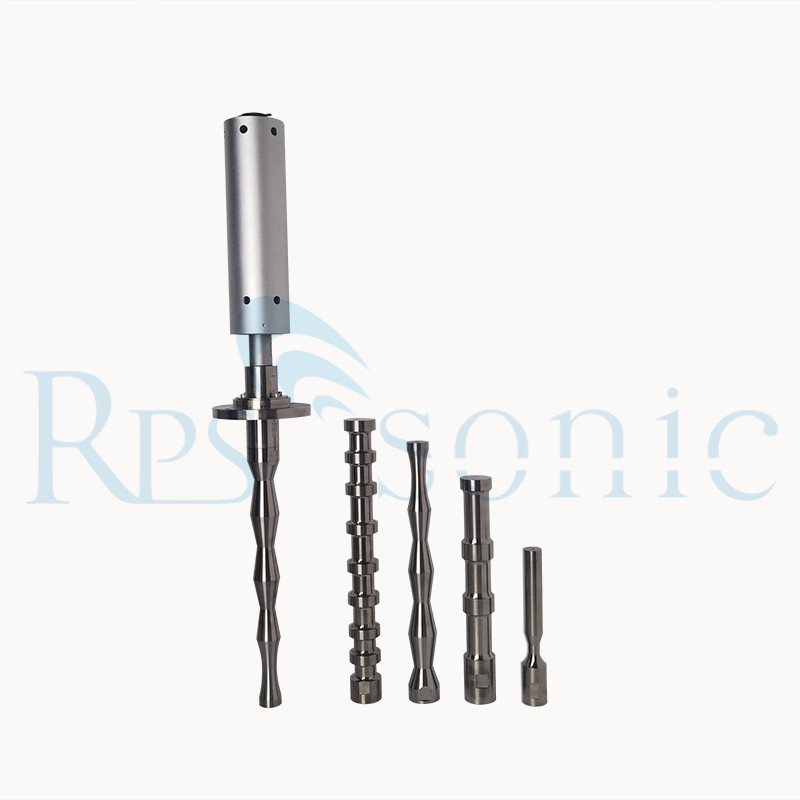
loading












| Availability: | |
|---|---|
| Quantity: | |
RPS-SONO20
RPS-SONIC
| Place of Origin | China |
|---|---|
| Brand Name | PRS-SONIC |
| Certification | CE |
| Model Number | RPS-S20-2000 |
| Minimum Order Quantity | 1set |
| Price | negotiation |
| Packaging Details | Foam And Wood Box |
| Delivery Time | 3days |
| Payment Terms | T/T, Western Union, MoneyGram |
| Supply Ability | 200 sets per month |
Description
Ultrasonic Homogenizer is a device that uses ultrasonic technology to homogenize liquids or suspensions. It converts electrical energy into high-frequency mechanical vibrations through ultrasonic transducers, produces cavitation effects (i.e., the expansion and collapse of tiny bubbles) and strong shear forces, and evenly disperses, emulsifies or breaks up the substances in the liquid, thereby achieving efficient homogenization effects. Ultrasonic homogenizers are widely used in many industries such as chemical, pharmaceutical, food, cosmetics, and environmental protection, and are particularly suitable for dispersion, emulsification, breaking or mixing processes that require high precision and high uniformity.
| Item | Parameter |
| Frequency | 20Khz |
| Power | 2000W |
| Capacity | 10L |
| Horn diameter | 16mm |
| Probe dip depth | 80mm |
Application areas of ultrasonic homogenizer
1. Pharmaceutical industry:
Drug dispersion and emulsification: Ultrasonic homogenizer can disperse insoluble components (such as oily drugs) in drugs into nano-scale particles to increase the bioavailability of drugs.
Vaccines and biological products: Homogenize vaccines, antibodies and other biological products to improve their uniformity and stability.
2. Food industry:
Emulsification and dispersion: For example, in the production of salad dressings, creams, beverages and other foods, it is necessary to emulsify the oil and water phases or disperse solid particles in liquids.
Juice and beverages: Help pulp, fruit particles, etc. to be evenly distributed in beverages to prevent precipitation.
3. Cosmetics industry:
Lotions and creams: Ultrasonic homogenizers can help effectively emulsify oil and water components and improve product stability and texture.
Essence and perfume: Used to disperse essential oils, spices and other active ingredients to ensure product uniformity.
4. Chemical industry:
Homogenization of polymers: When used to synthesize polymer materials, it can evenly disperse monomers and improve the effect of polymerization reactions.
Pigment dispersion: In chemical products such as coatings and paints, ultrasonic homogenization can effectively disperse pigments and prevent precipitation.
5. Environmental protection:
Wastewater treatment: It can be used to disperse chemical agents in sewage, promote reactions, and improve sewage treatment efficiency.
6. Nanotechnology:
Nanomaterial preparation: It is widely used in the preparation and dispersion of nanomedicines, nanomaterials, nanoemulsions, etc.
Description
Ultrasonic Homogenizer is a device that uses ultrasonic technology to homogenize liquids or suspensions. It converts electrical energy into high-frequency mechanical vibrations through ultrasonic transducers, produces cavitation effects (i.e., the expansion and collapse of tiny bubbles) and strong shear forces, and evenly disperses, emulsifies or breaks up the substances in the liquid, thereby achieving efficient homogenization effects. Ultrasonic homogenizers are widely used in many industries such as chemical, pharmaceutical, food, cosmetics, and environmental protection, and are particularly suitable for dispersion, emulsification, breaking or mixing processes that require high precision and high uniformity.
| Item | Parameter |
| Frequency | 20Khz |
| Power | 2000W |
| Capacity | 10L |
| Horn diameter | 16mm |
| Probe dip depth | 80mm |
Application areas of ultrasonic homogenizer
1. Pharmaceutical industry:
Drug dispersion and emulsification: Ultrasonic homogenizer can disperse insoluble components (such as oily drugs) in drugs into nano-scale particles to increase the bioavailability of drugs.
Vaccines and biological products: Homogenize vaccines, antibodies and other biological products to improve their uniformity and stability.
2. Food industry:
Emulsification and dispersion: For example, in the production of salad dressings, creams, beverages and other foods, it is necessary to emulsify the oil and water phases or disperse solid particles in liquids.
Juice and beverages: Help pulp, fruit particles, etc. to be evenly distributed in beverages to prevent precipitation.
3. Cosmetics industry:
Lotions and creams: Ultrasonic homogenizers can help effectively emulsify oil and water components and improve product stability and texture.
Essence and perfume: Used to disperse essential oils, spices and other active ingredients to ensure product uniformity.
4. Chemical industry:
Homogenization of polymers: When used to synthesize polymer materials, it can evenly disperse monomers and improve the effect of polymerization reactions.
Pigment dispersion: In chemical products such as coatings and paints, ultrasonic homogenization can effectively disperse pigments and prevent precipitation.
5. Environmental protection:
Wastewater treatment: It can be used to disperse chemical agents in sewage, promote reactions, and improve sewage treatment efficiency.
6. Nanotechnology:
Nanomaterial preparation: It is widely used in the preparation and dispersion of nanomedicines, nanomaterials, nanoemulsions, etc.








Ultrasonic Welding Equipment Ultrasonic Welding Transducer Ultrasonic Welding Converter Ultrasonic Liquid Processor Ultrasonic Cutting Equipment Ultrasonic Spray Nozzles Ultrasonic Power Supply Ultrasonic Soldering Equipment Ultrasonic Welding Horn Ultrasonic Assisted Machining Ultrasonic Testing Equipment